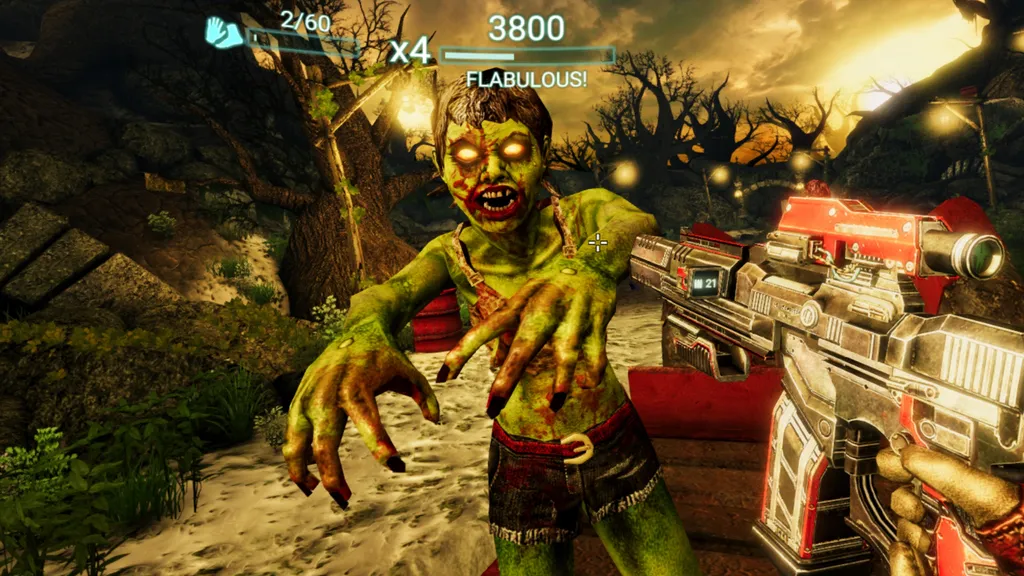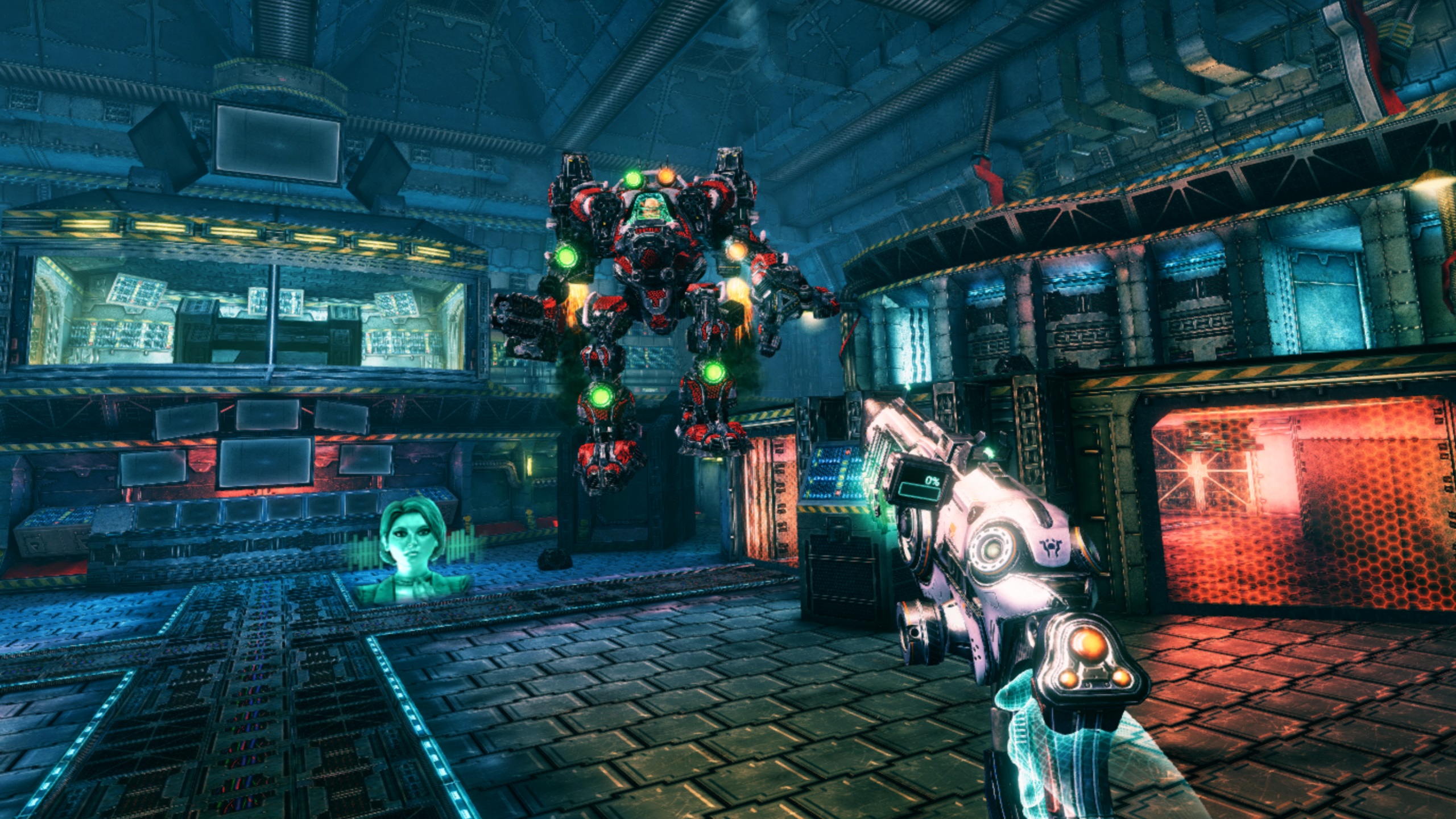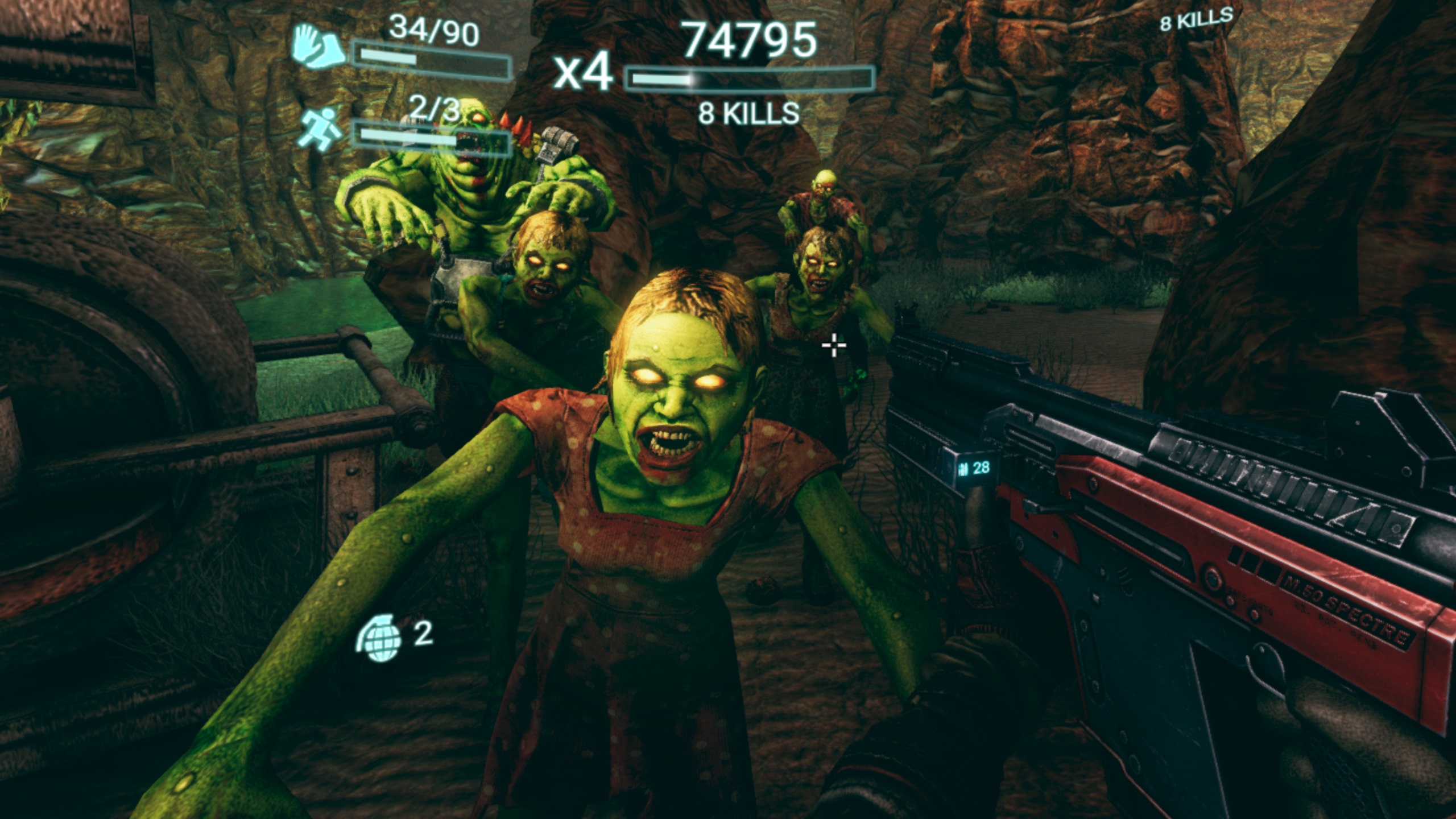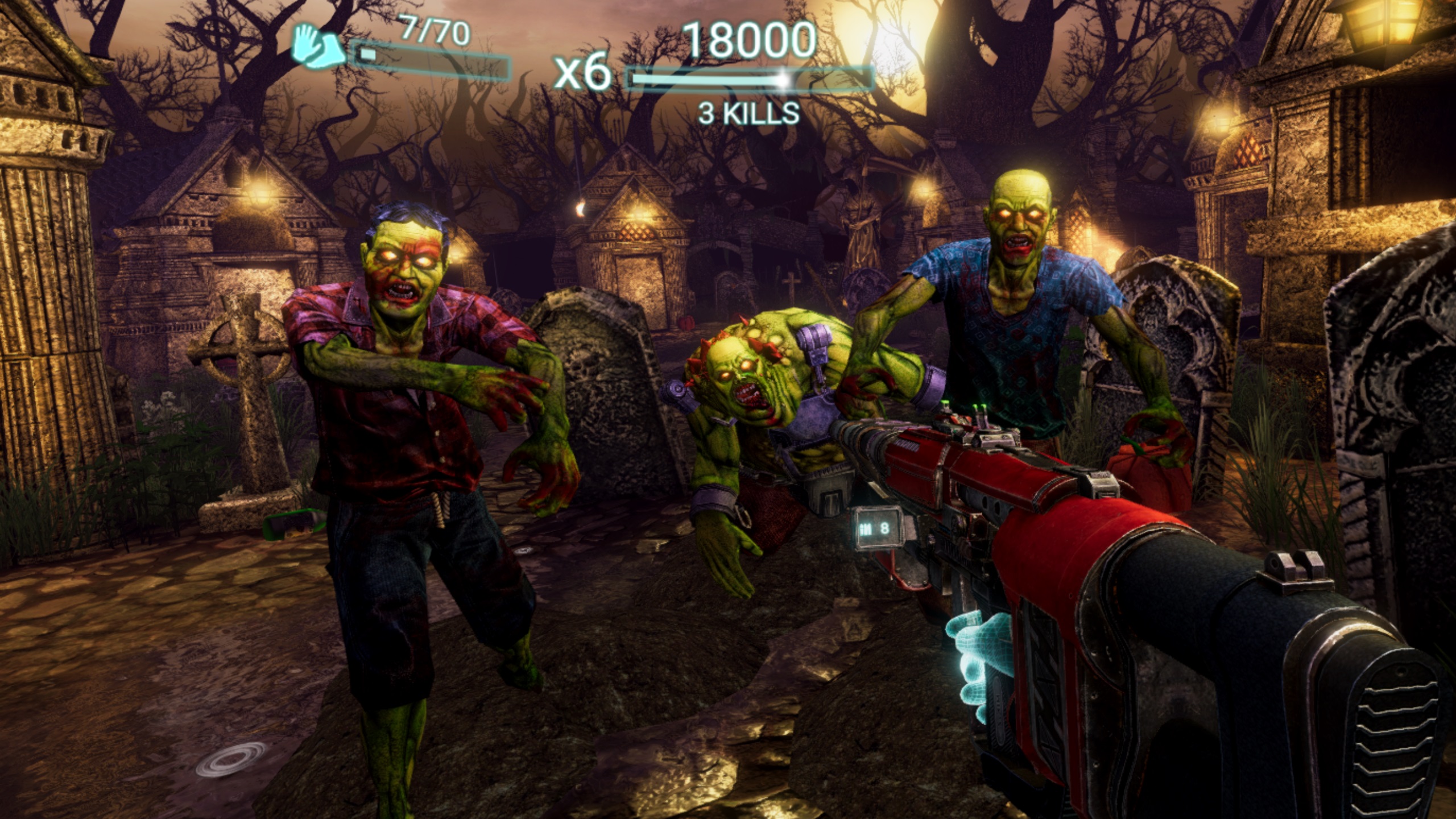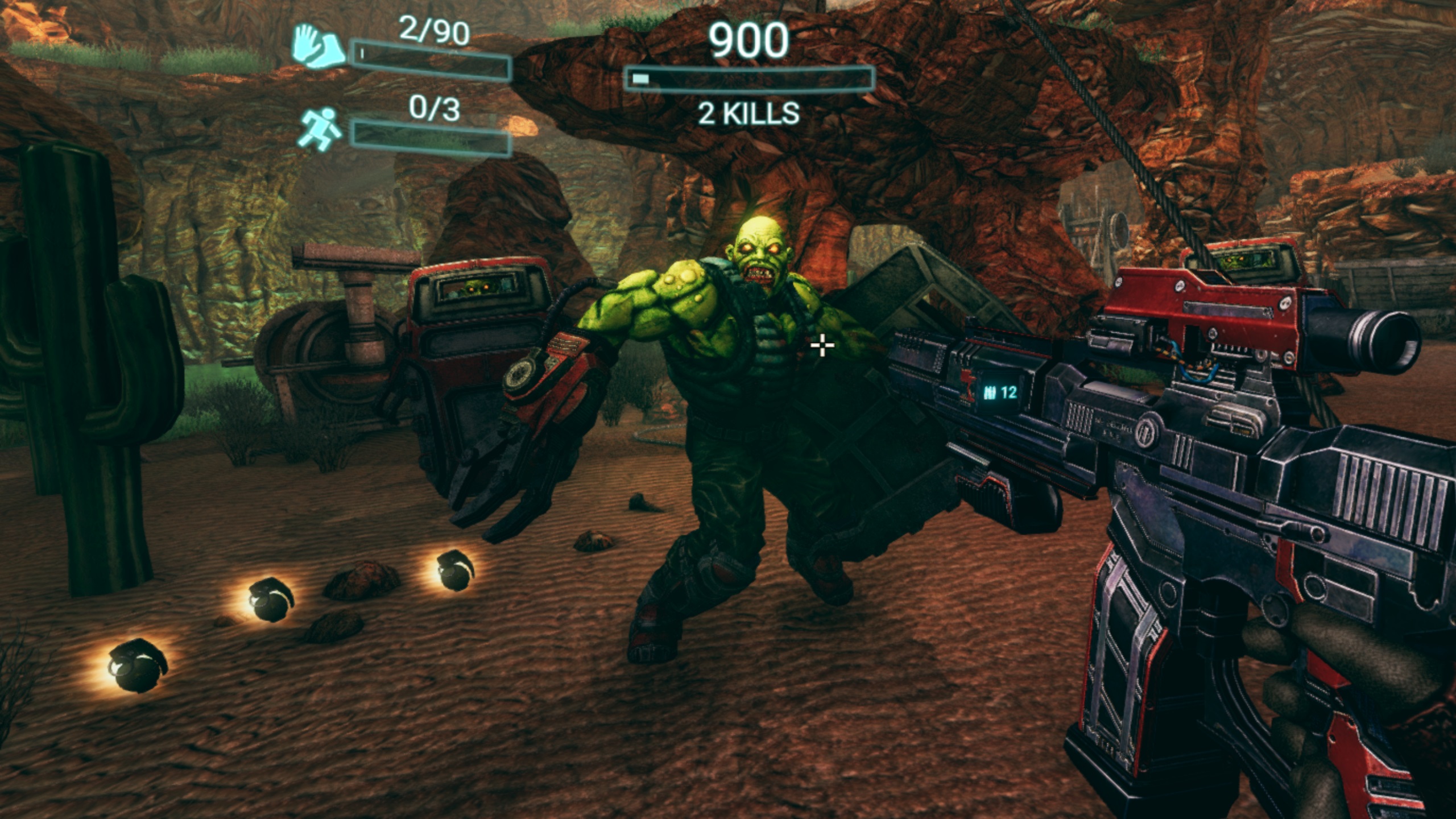Update: This review was originally published on 11/2/2016 and specifically focused on the Gear VR version of the game. As of tomorrow, 3/23/2017, it will be releasing on the Oculus Rift as well with a large update that also improves and expands the game for Gear VR. This review has been updated by Games Editor David Jagneaux to now account for both versions of the game.
—
Any Halloween season wouldn’t be complete without creepy, gore-filled action games, so Gear VR users were thankful for the timely release of Drop Dead late last year. This zombie-themed shooter will instantly feel familiar for anyone who spent hours in dark arcades (or in front of TV screens) playing light gun games like House of the Dead. Now in 2017, it’s getting full support for Oculus Rift and the Touch controllers with expanded content and enhanced visuals.
Granted, on-rails, wave-based shooting games are kind of a thing in VR, but we still appreciate a good one when it comes along. Drop Dead from Pixel Toys is, thankfully, a good one.
Part of its success is the game’s general inability to take itself too seriously. House of the Dead–the quintessential horror gun game–worked thanks to a mix of intense bloody action and incredibly deadpan B-movie level absurdity. Right from the start, Drop Dead is channeling a SyFy Channel-level mentality about not taking itself seriously, complete with a lunatic, goggle-wearing mad scientist and sarcastic companions.
The act of actually mowing down enemies in Drop Dead, generally speaking, couldn’t be simpler. You just look and shoot on Gear VR and on Rift you can use a gamepad, the Oculus Remote, or for the best results, Oculus Touch controllers. Pointing and pulling the trigger feels great. The action is entirely on rails, like a vaguely interactive movie, where the game moves you on a pre-scripted path and the only control the player has is what to kill. While simple at first, it’s satisfying and hides a lot of depth beneath the surface.
However, Drop Dead does take a minor nod from Gears of War with its reloading mechanic. When you reload, it’s visualized by a moving bar within a circle. There’s a sweet spot zone in the circle which you can hit for an instant reload. Each gun you acquire has different timing for reloading and missing the sweet spot results in a painfully long and potentially deadly delay in reloading. This provides an interesting and effective method for creating tension amidst the zombie-filled landscapes.
Drop Dead has a surprising amount of focus on its story as well, really more so than it even needs. The evil Doctor Monday is unleashing the zombie apocalypse on the world and because of your special time travel-capable DNA, you are the last person on Earth who can stop him. You have a father and daughter duo who brief you for each mission and occasionally interact during levels and there’s a lot of set up in the B-movie style premise from the start.
The first two levels of the game’s ~13 in the initial story campaign are really just plot exposition, along with 14 new missions for the Rift release (also coming to Gear VR). After that, the action stays pretty consistent. Drop Dead does a surprisingly good job of making use of multi-layered levels across a variety of urban, rural, and goofy science fiction landscapes. Zombies can come up from the ground, burst open doors, run across rooftops, and frequently come at you from multiple angles.
Beyond your basic pistol, there are other satisfying mainstays of zombie killing–the shotgun, assault rifle, explosives, and more. You pick up power ups such as health, guns, and ammo by looking at the object and tapping the touch screen. Whatever the item is, it telekinetically flies to you. The starter pistol has unlimited ammo, but still must be frequently reloaded.
There’s a decent variety of zombies as well, from crawling corpses and armed undead, to giant, lumbering hulks and toxic goop spitting fiends. The environments often feature exploding barrels and other useful features. So, while the gameplay isn’t particularly deep in the slightest, the shooting action is certainly meaty and fun.
The presentation is generally decent on Gear VR, although the graphics aren’t exactly cutting edge, with incredibly angular models that are likely to remind older gamers of 3D engines from the early 2000s of even older Sega arcade games. Still, it works, especially since the frame rate is high enough for the action to feel smooth and non-jarring. The voice acting and dialogue are nicely campy, which helps a lot. On Rift, things are turned up a few notches and everything looks noticeably crisper, smoother, and generally of much higher fidelity.
Drop Dead also features a novice player mode that strips out the story and motion-heavy transitions for the most part to allow for an even safer target shooting experience. There’s even multiplayer where players compete to get the highest scores. Since fancy shooting like headshots and multi-kills is a big focus of the action, playing for points against others has a nicely classic arcade feel.
This most recent update’s best additions though are the two multiplayer game modes. There’s a real-time competitive multiplayer system that takes full advantage of customized Oculus Avatars on Rift and a wave-based cooperative Horde mode as well. Combined with the March 2017 update it’s receiving as well with new weapons, missions, and other content, it takes an already good game and made it even better — especially if played on Rift with Touch.
Drop Dead is certainly one of the best shooting games on the Gear VR and a capable inclusion in the Rift’s growing library. The solid, smooth performance and accurate targeting make it plenty of fun and the new missions and brand new multiplayer mode add plenty of replay value. More than that though, it’s an excellent homage to the classic light gun games of old.
You can access Drop Dead on Gear VR through the Oculus Home store now, for $9.99. It will be available soon for Oculus Rift, including support for Touch controllers. Read our Game Review Guidelines for more information on how we arrived at this score.

